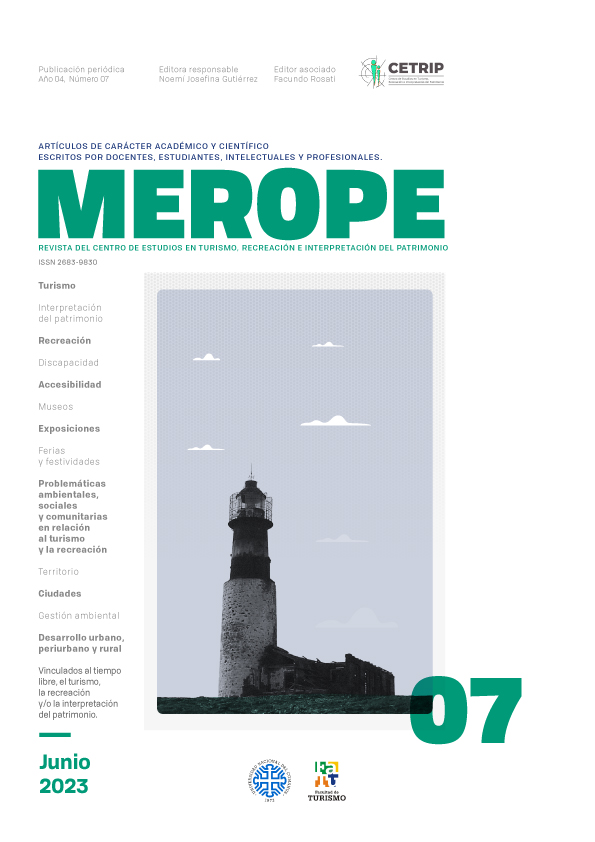Ritualidad y turismo en la región de Córdova-Orizaba, Veracruz, México
Keywords:
Nahuas de Veracruz, Sierra de Zongolica, petición de lluvias, turismo rural, request for rain, rural tourismAbstract
Resumen
El ritual de Xochitlalli se realiza en varias cuevas de la región Zongolica-Tehuacan-Teotitlán,
el primer viernes de marzo, y en él se rinde culto a Nana “Tonantzin”, como llaman los nahuas
del área a la diosa de la Tierra; en la ceremonia se agradece por las cosechas abundantes que se
tuvieron durante el año. Esta fiesta es una fusión de creencias y tradiciones autóctonas prehispánicas
y el catolicismo traído durante la conquista. En primer lugar, podemos apreciar el culto a las
deidades de la lluvia, propio de las antiguas sociedades agrícolas, así como la religiosidad en torno
a las cuevas, con todos los mitos que esto implica. Finalmente observamos el aspecto religioso
moderno, en el cual hay procesiones y la cruz y el altar que se suelen poner en el interior de la
cueva. A este aspecto religioso se le ha sumado el turístico, que en gran medida ha desvirtuado
segmentos del ritual, volviéndolo más atractivos para aquellos que asisten a observarlo. En este
trabajo se observa el cambio drástico de un ritual que inicialmente tenía características privadas y
su apertura a un turismo desmedido.
Abstract
The Xochitlalli ritual is performed in several
caves in the Zongolica-Tehuacan-Teotitlán
region, on the first Friday of March, and in it
Nana “Tonantzin” is worshiped, as the Nahuas
of the area call the goddess of the Earth; In the
ceremony, thanks are given for the abundant
harvests that were had during the year. This
festival is a fusion of autochthonous pre-Hispanic
beliefs and traditions and the Catholicism
brought during the conquest. In the first place, we
can appreciate the cult of the rain deities, typical
of ancient agricultural societies, as well as the
religiosity around the caves, with all the myths
that this implies. Finally, we observe the modern
religious aspect, in which there are processions
and the cross and the altar that are usually
placed inside the cave. The tourist aspect has
been added to this religious aspect, which to a
large extent has distorted segments of the ritual,
making it more attractive for those who attend
to observe it. This work shows the drastic change
of a ritual that initially had private characteristics
and its opening to excessive tourism.
Downloads
Downloads
Published
How to Cite
Issue
Section
License
Copyright (c) 2023 Mérope. Revista del Centro de Estudios en Turismo, Recreación e Interpretación del Patrimonio

This work is licensed under a Creative Commons Attribution-NonCommercial-NoDerivatives 4.0 International License.
Los artículos que se incluyan en revista “Mérope” se publicarán bajo una licencia Reconocimiento-NoComercial-SinObraDerivada 3.0 Creative Commons. Esta licencia implica que usted conserva plenamente sus derechos de autor, pero autoriza a terceros a copiar, distribuir y comunicar públicamente su artículo bajo las siguientes condiciones:
• Reconocimiento: debe incluir los créditos de la obra de la manera especificada por el autor o el licenciador.
• No comercial: no se puede utilizar el artículo para fines comerciales
• Sin obras derivadas: no se puede alterar, transformar o generar una obra derivada a partir del artículo. Aquellos artículos que, por distintas razones, no sean publicados, no serán difundidos a terceros ni enviados a otras revistas o plataformas digitales.
El comité editorial de la revista Merope y el Centro de Estudios en Turismo, Recreación e Interpretación del Patrimonio (CETRIP) se comprometen a respetar escrupulosamente los derechos de propiedad intelectual de los autores.




